Temporarily Repairing a Flat Tire
If the tire has a large cut or is otherwise severely damaged, you will need to have the vehicle towed. If the tire only has a small puncture, from a nail for instance, you can use the temporary tire repair kit so that you can drive to the nearest service station for a more permanent repair.
If a tire goes flat while driving, grasp the steering wheel firmly, and brake gradually to reduce speed. Then, stop in a safe place.
- Park the vehicle on a firm, level, non-slippery surface and apply the parking brake.
- Put the transmission into P.
- Turn on the hazard warning lights and set the power mode to VEHICLE OFF.
- Detail
-
The kit should not be used in the following situations. Instead, contact a dealer or roadside assistance to have the vehicle towed.
- The tire sealant has expired.
- More than one tire is punctured.
- The puncture or cut is larger than 3/16 inch (4 mm).
- The tire side wall is damaged or the puncture is outside the contact area.
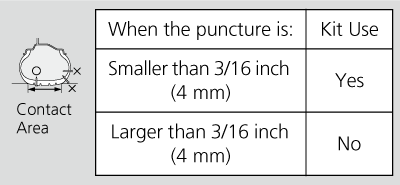
- Damage has been caused by driving with the tire extremely under inflated.
- The tire bead is no longer seated.
- The rim is damaged.
Do not remove a nail or screw that punctured the tire. If you remove it from the tire, you may not be able to repair the puncture using the kit.
Getting Ready to Temporarily Repair the Flat Tire
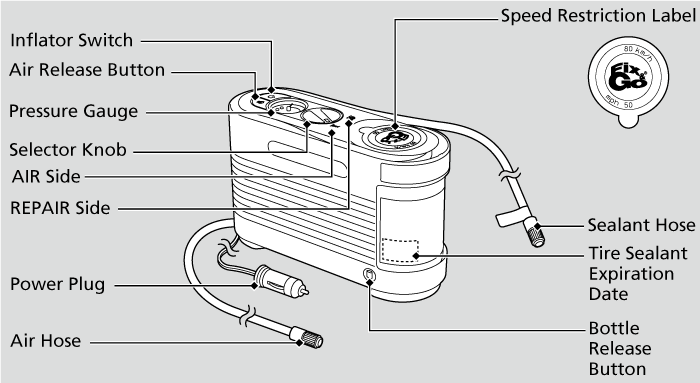
-
- Pull and remove the cover on the left side of the cargo area.
- Unfasten the strap and take the kit out of the cargo area.
- Place the kit face up, on flat ground near the flat tire, and away from traffic. Do not place the kit on its side.
-
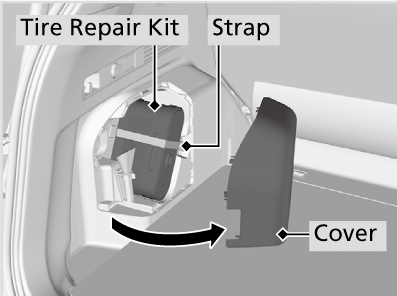
- Detail
-
Speed restriction label is applied on the temporary tire repair kit.
Injecting Sealant and Air
-
- Remove the valve cap from the tire valve stem.
-
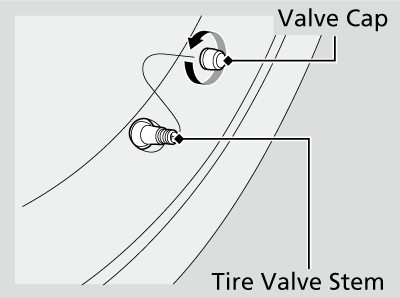
-
- Remove the sealant hose from the kit.
-
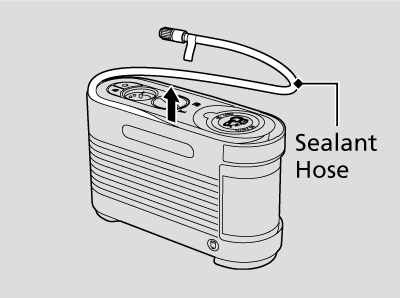
-
- Attach the sealant hose onto the tire valve stem. Screw it until it is tight.
-
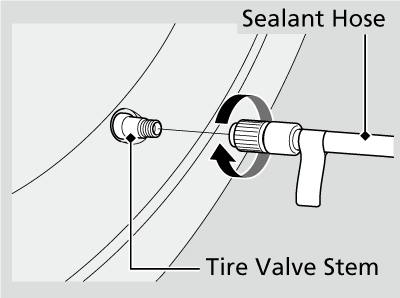
-
- Plug in the compressor to the accessory power socket.
- Be careful not to pinch the cord in a door or window.
- Do not plug any other electric devices into other accessory power sockets.
- Plug in the compressor to the accessory power socket.
-
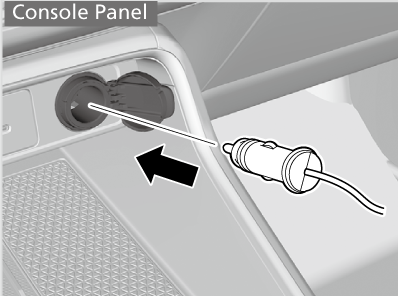
-
- Turn the power system on.
- Keep the power system on while injecting sealant and air.
- Turn the power system on.
-
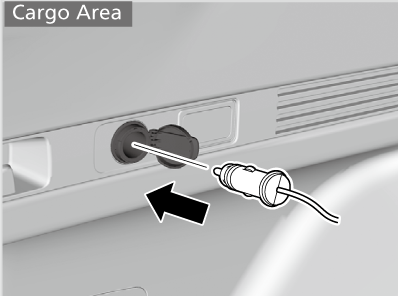
-
- Turn the selector knob to
 .
.
- Turn the selector knob to
-
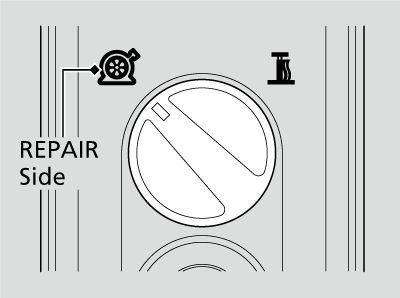
-
- Press the inflator switch to turn on the kit.
- The compressor starts injecting sealant and air into the tire.
- When the sealant injection is complete, continue to add air.
- Models with 235/60R18 103H tires
After the air pressure reaches front: 35 psi (240 kPa)/rear: 32 psi (220 kPa), turn off the kit.
Models with 235/55R19 101H tires
After the air pressure reaches 33 psi (230 kPa), turn off the kit.- To check the pressure, occasionally turn off the compressor and read the gauge.
- Press the inflator switch to turn on the kit.
-
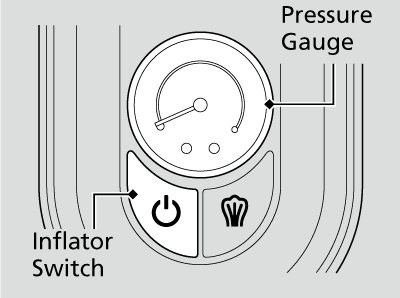
-
- Unplug the power plug from the accessory power socket.
- Unscrew the sealant hose from the tire valve stem. Reinstall the valve cap.
- Press the air release button until the gauge returns to 0 psi (0 kPa).
-
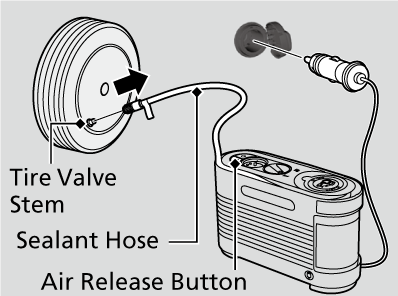
- WARNING
-
Tyre sealant contains substances that are harmful and can be fatal if swallowed.
If accidentally swallowed, do not induce vomiting. Drink plenty of water and get medical attention immediately.
For skin or eye contact, flush with cool water and get medical attention if necessary.
- WARNING
-
Running the engine with the vehicle in an enclosed or even partly enclosed area can cause a rapid buildup of toxic carbon monoxide.
Breathing this colorless, odorless gas can cause unconsciousness and even death. Only run the engine to power the air compressor with the vehicle outdoors.
- Detail
-
The sealant can permanently stain clothing and other materials. Be careful during handling and wipe away any spills immediately.
NOTICE
Do not operate the temporary tire repair kit compressor for more than 15 minutes. The compressor can overheat and become permanently damaged.
There are two accessory power sockets:- In the console panel
- In the cargo area
Until the sealant injection is complete, the pressure shown on the pressure gauge will appear higher than actual. After the sealant injection is complete the pressure will drop and then begin to rise again as the tire is inflated with air. This is normal. To accurately measure the air pressure using the gauge, turn the air compressor off only after the sealant injection is complete.If the required air pressure is not reached within 10 minutes, the tire may be too severely damaged for the kit to provide the necessary seal, and your vehicle will need to be towed.See a dealer for a replacement sealant bottle and proper disposal of an empty bottle.
Distributing the Sealant in the Tire
-
- Apply the speed restriction label to the location as shown.
- Drive the vehicle for about 10 minutes.
- Do not exceed 50 mph (80 km/h).
- Stop the vehicle in a safe place.
-
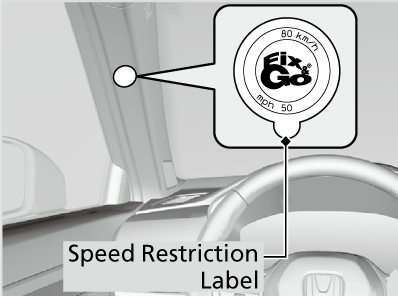
-
- Recheck the air pressure using the air hose on the compressor.
-
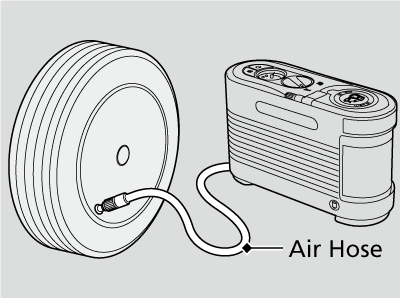
-
- Turn the selector knob to
 .
.- Do not turn the air compressor on to check the pressure.
- Turn the selector knob to
-
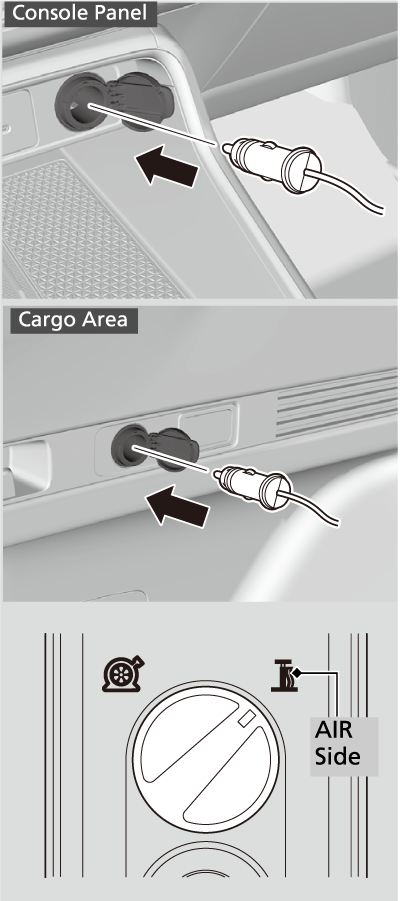
- If the air pressure is
- Less than 19 psi (130kPa):
Models with 235/60R18 103H tires- Front: 35 psi (240 kPa)/rear: 32 psi (220 kPa) or more:
Models with 235/55R19 101H tires- 33 psi (230 kPa) or more:
Continue driving for another 10 minutes or until you reach the nearest service station, whichever is sooner. Do not exceed 50 mph (80 km/h). If you have not reached a service station, stop and check the tire pressure.- If the air pressure does not go down after the 10 minute driving, you do not need to check the pressure any more.
Models with 235/60R18 103H tires- Greater than 19 psi (130 kPa), but less than front: 35 psi (240 kPa)/rear: 32 psi (220 kPa):
Inflating an Under-inflated Tire
Models with 235/55R19 101H tires- Greater than 19 psi (130 kPa), but less than 33 psi (230 kPa):
Inflating an Under-inflated Tire
All models
Then, drive carefully for 10 more minutes or until you reach the nearest service station, whichever is sooner. Do not exceed 50 mph (80 km/h). If you have not reached a service station, stop and check the tire pressure.- You should repeat this procedure as long as the air pressure is not within the range indicated for the tire size.
-
- Unplug the kit from the accessory power socket.
- Unscrew the air hose from the tire valve stem. Reinstall the valve cap.
- Press the air release button until the gauge returns to 0 psi (0 kPa).
- Repackage and properly stow the kit.
-
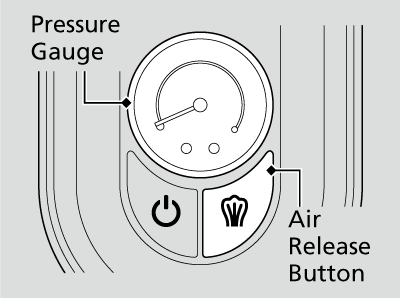
- WARNING
-
Running the engine with the vehicle in an enclosed or even partly enclosed area can cause a rapid buildup of toxic carbon monoxide.
Breathing this colorless, odorless gas can cause unconsciousness and even death. Only run the engine to power the air compressor with the vehicle outdoors.
Inflating an Under-inflated Tire
You can use the kit to inflate a non-punctured under-inflated tire.
-
- Remove the cover on the left side of the cargo area.
- Take the kit out of the cargo area.
- Place the kit, face up, on flat ground near the tire to be inflated, away from traffic. Do not place the kit on its side.
- Remove the power plug and air hose from the kit.
-
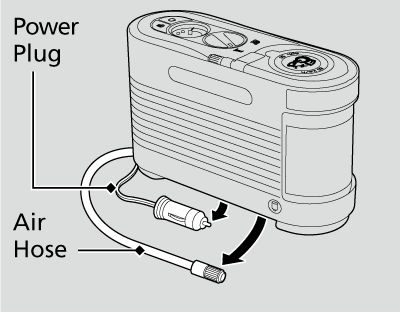
-
- Remove the valve cap.
-

-
- Attach the air hose onto the tire valve stem. Screw it until it is tight.
-
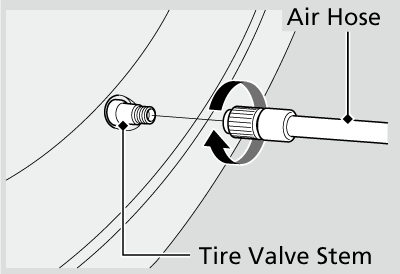
-
- Plug in the kit to the accessory power socket.
- Be careful not to pinch the cord in a door or window.
- Do not plug any other electric devices into other accessory power sockets.
- Plug in the kit to the accessory power socket.
-

-
- Turn the power system on.
- Keep the power system on while injecting sealant and air.
- Turn the power system on.
-

-
- Turn the selector knob to
 .
. - Press the inflator switch to turn on the kit.
- The compressor starts to inject air into the tire.
- Inflate the tire to the specified air pressure.
- Turn the selector knob to
-
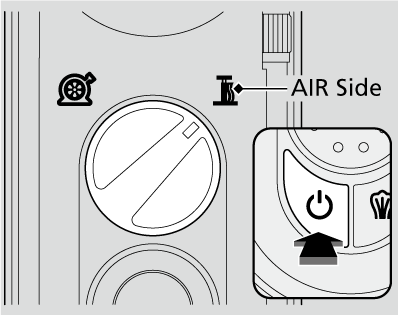
-
- Turn off the kit.
- Check the pressure gauge on the air compressor.
- If overinflated, press the air release button.
- Unplug the kit from the accessory power socket.
- Unscrew the air hose from the tire valve stem. Reinstall the valve cap.
- Press the air release button until the gauge returns to 0 psi (0 kPa).
- Repackage and properly stow the kit.
- Turn off the kit.
-

- WARNING
-
Running the engine with the vehicle in an enclosed or even partly enclosed area can cause a rapid buildup of toxic carbon monoxide.
Breathing this colorless, odorless gas can cause unconsciousness and even death. Only run the engine to power the air compressor with the vehicle outdoors.
- Detail
-
NOTICE
Do not operate the temporary tire repair kit compressor for more than 15 minutes. The compressor can overheat and become permanently damaged.
- Recommended topic(s)

